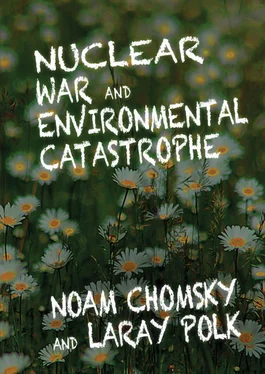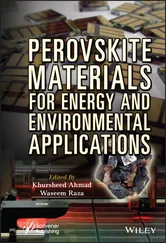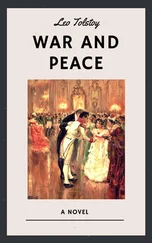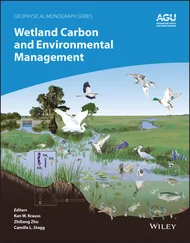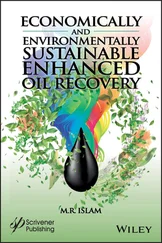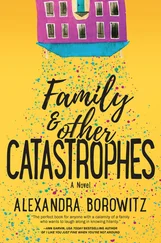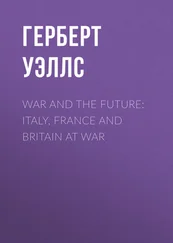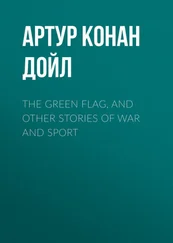However, it is unlikely that the issue of liability will arise for the reason already mentioned. The powerful are self-immunized from even inquiry, let alone punishment for their crimes. [42] In 1984 Monsanto and six other manufacturers settled with US veterans in a class-action lawsuit; $180 million was distributed according to a plan partially designed by US District Judge Jack B. Weinstein. In 2005 Weinstein denied claims sought by Vietnamese victims of Agent Orange on grounds of specific intent: “The United States did not use herbicides in Vietnam with the specific intent to destroy any group. Nor were those herbicides designed to harm individuals or to starve a whole population into submission or death. The herbicides were primarily applied to plants in order to protect troops against ambush, not to destroy a people.” Vietnam Association for Victims of Agent Orange/Dioxin v. Dow Chemical Co. et al., MDL No. 381, 04-CV-400 (E.D.N.Y. March 25, 2005). See also Dominic Rushe, “Monsanto Settles ‘Agent Orange’ Case with US Victims,” Guardian (London), February 24, 2012.
The Radiation Protection Center in Baghdad has found a “clear radiation trail” from tanks hit by DU penetrators to their relocation to scrap sites. [43] Martin Chulov, “Iraq Littered with High Levels of Nuclear and Dioxin Contamination, Study Finds,” Guardian (London), January 22, 2010; Aseel Kami, “Iraq Scarred by War Waste,” Globe and Mail (Toronto), October 24, 2008. Burn pits are another source of lethal toxicity: “Since 2003, defense contractors have used burn pits at a majority of U.S. military bases in Iraq and Afghanistan as a method of destroying military waste. The pits incinerate discarded human body parts, plastics, hazardous medical material, lithium batteries, tires, hydraulic fluids, and vehicles. Jet fuel keeps pits burning twenty-four hours a day, seven days a week.” J. Malcolm Garcia, “Toxic Trash: The Burn Pits of Iraq and Afghanistan,” Oxford American , August 24, 2011.
What obligations to cleanup do the US and the UK have? How likely is it?
Obligations can be legal or moral. The US and UK invasion was a textbook example of the crime of aggression, “the supreme international crime differing only from other war crimes in that it contains within itself the accumulated evil of the whole,” in the wording of the Nuremberg Tribunal, which sentenced Nazi war criminals to death for committing this crime. We should therefore have the honesty either to concede that the tribunal was judicial murder, hence our crime, or to recognize that George Bush, Tony Blair, and their accomplices should be subjected to the legal principles established at Nuremberg. Cleanup would be one important obligation on legal grounds, but a minor one in context. At the very least, the US and UK are obligated to provide massive reparations for their crimes against Iraq.
Judgment on moral grounds depends on what one’s moral principles are. There is no doubt that cleanup—in fact, far more—would be regarded as a moral obligation if the crimes had been carried out by an enemy. Therefore it is an obligation for us if we are capable of accepting one of the most elementary of moral principles, found in every moral code worth consideration: the principle of universality, holding that we should apply to ourselves the standards we impose on others, if not more stringent ones.
How likely is it? Highly unlikely unless the dominant elites, particularly the educated classes, make an effort to rise to a level of civilization for which there is, unfortunately, no sign. In fact, even raising the issue arouses horror and often hysteria.
Does secrecy in matters of radioactive releases—intentional or unintentional—pose a danger equal to the materials themselves? [44] In 1994 Pres. Clinton established the Advisory Committee on Human Radiation Experiments (ACHRE) to investigate US government-funded research conducted between 1944 and 1974. A host of documents were sought, assembled, and declassified, establishing nearly four thousand radiation experiments involving plutonium and other atomic bomb materials; nontherapeutic research on children; total body irradiation; research on prisoners; intentional radioisotope distribution and atmospheric releases; and observational research involving uranium miners and residents of the Marshall Islands. In 1995 documents from the original ACHRE site were obtained by the National Security Archive (an independent nongovernmental research institute and library) located at George Washington University in Washington, DC.
Perhaps. But the greatest threat, I think, is the evasion and suppression of what is known, or could easily be known if there were any authentic concern for terrible crimes. Of course there is much anguish when someone else is guilty, but the crucial case, always, is when we ourselves are the perpetrators—clearly the most crucial case for us, on elementary moral grounds. Sometimes there is awareness, though ineffectual. Thomas Jefferson famously said that “I tremble for my country when I reflect that God is just, that his justice cannot sleep forever,” referring to the crime of slavery. John Quincy Adams, the great grand strategist who was the intellectual author of Manifest Destiny, expressed very similar thoughts in reflecting on the “extermination” of the indigenous population with “merciless and perfidious cruelty… among the heinous sins of this nation, for which I believe God will one day bring [it] to judgement.” Their concerns should resonate painfully to the present day. Those who preach most eloquently about their devotion to their Lord express only contempt for such thoughts; and they have plenty of company, needless to say. The US and its intellectual community are breaking no new ground, of course. They are following the course typical of systems of power, throughout history. We should, I think, take all of this as an indication of the great chasm that lies between the most advanced cultures and minimal standards of elementary decency, honesty, and moral integrity. Not a small problem, quite apart from the matters we are discussing.
Laray Polk: What immediate tensions do you perceive that could lead to nuclear war? How close are we?
Noam Chomsky: Actually, nuclear war has come unpleasantly close many times since 1945. There are literally dozens of occasions in which there was a significant threat of nuclear war. There was one time in 1962 when it was very close, and furthermore, it’s not just the United States. India and Pakistan have come close to nuclear war several times, and the issues remain. Both India and Pakistan are expanding their nuclear arsenals with US support. There are serious possibilities involved with Iran—not Iranian nuclear weapons, but just attacking Iran—and other things can just go wrong. It’s a very tense system, always has been. There are plenty of times when automated systems in the United States—and in Russia, it’s probably worse—have warned of a nuclear attack which would set off an automatic response except that human intervention happened to take place in time, and sometimes in a matter of minutes. [45] In January 1995 Russia misidentified a Norwegian weather rocket as a US submarine-launched ballistic missile. Pres. Boris Yeltsin had the controls for a nuclear launch in hand, but decided at the last minute it had been a false alert. “As Russian capabilities continue to deteriorate, the chances of accidents only increase…. Russia’s early warning systems are ‘in a serious state of erosion and disrepair,’ making it all the more likely that a Russian president could panic and reach a different conclusion than Yeltsin did in 1995.” Joseph Cirincione, Bomb Scare: The History and Future of Nuclear Weapons (New York: Columbia University Press, 2007), 96–97.
That’s playing with fire. That’s a low-probability event, but with low-probability events over a long period, the probability is not low.
Читать дальше
